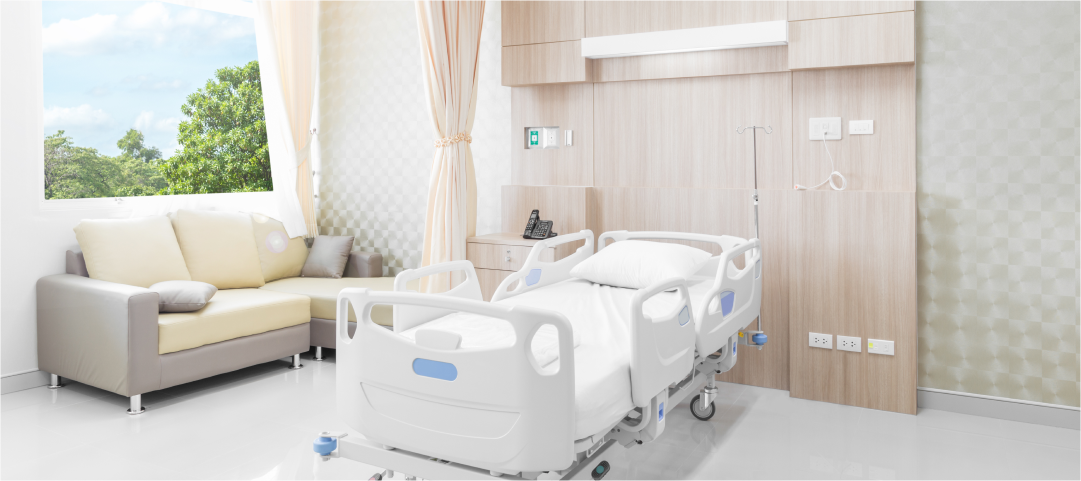
They say,
Colour creates, enhances, changes, reveals and establishes the mood;
…and can they be any truer?
Especially, in the healthcare & medical facilities where colour influences the patient’s wellbeing and hospital experience. Colours can evoke instant physical and physiological responses in people and hence have a significant impact on the mental and emotional health of patients. It is important to choose colours for interior wall paints wisely and widely to achieve the desired intent.
Colours: What They Mean
White: White promotes feelings of cleanliness and safety. A clean, white colour when used for hospital walls cultivates a sense of scrubbed and sterile spaces. Doctors and nurses often dress in white lab coats and scrubs to blend in with the space.
Blue: It is commonly associated with calm, serenity, and unparalleled tranquillity. It is a colour that can help reduce anxiety and stress and has been used in healthcare areas to create a relaxing environment. It is known to stabilize blood pressure and the heart rate.
Green: Green is often associated with nature and harmony. This colour has a calming and cooling effect and has been used in medical settings to promote healing and wellness. Green is also associated with hope, renewal and rejuvenation, which can be comforting to recovering patients.
Yellow: The colour of warmth and eternal happiness. Yellow is associated with optimism and overall well-being. It is also famously known to increase appetite and promote energy. Yellow is the most suited colour for recovery rooms and clinical treatments.
“REMEMBER, COLOUR IS NOT JUST COLOUR, BUT MOOD, TEMPERATURE AND STRUCTURE” – VAN DAY TREUX
Colours: What They Can Do
A Warm Welcome: The bright colours can help create a welcoming and friendly environment for patients. Soft, warm tones, such as blues and greens, convey calm and collective serenity, thereby reducing anxiety and stress. This creates a more affable atmosphere conducive to speedy recovery of the patient
A Positive Stimulation: Vibrant, peppy colours, such as yellows and oranges, can positively stimulate patients and improve their mood. This is especially important in paediatric areas, where the use of cheerful colours can help distract and entertain children during their hospital stay. A more peaceful experience in the hospital environment with eco-friendly paints can contribute to speedy patient recovery and a happy stay, especially for kids.
“COLOUR IS A POWERFUL PHYSICAL, BIOLOGICAL, AND PSYCHOLOGICAL FORCE” – JOHN PAUL CAPONIGRO

Colours: Where They Can be Used
Reception: A clean yet inviting reception with direction indicators and infographics can be helpful for patient guidance.
Waiting Areas: This is where the patient’s families spend the most time in despair. A soothing colour palate for interior wall paints helps in reducing stress levels.
Patient Rooms: A serene colour scheme with thoughtful, bold punches can help brighten the patient’s day.
Connecting Corridors: These see a lot of action from both, staff, and patients. Colour specifications that can take on traffic and still be durable should be applied.


